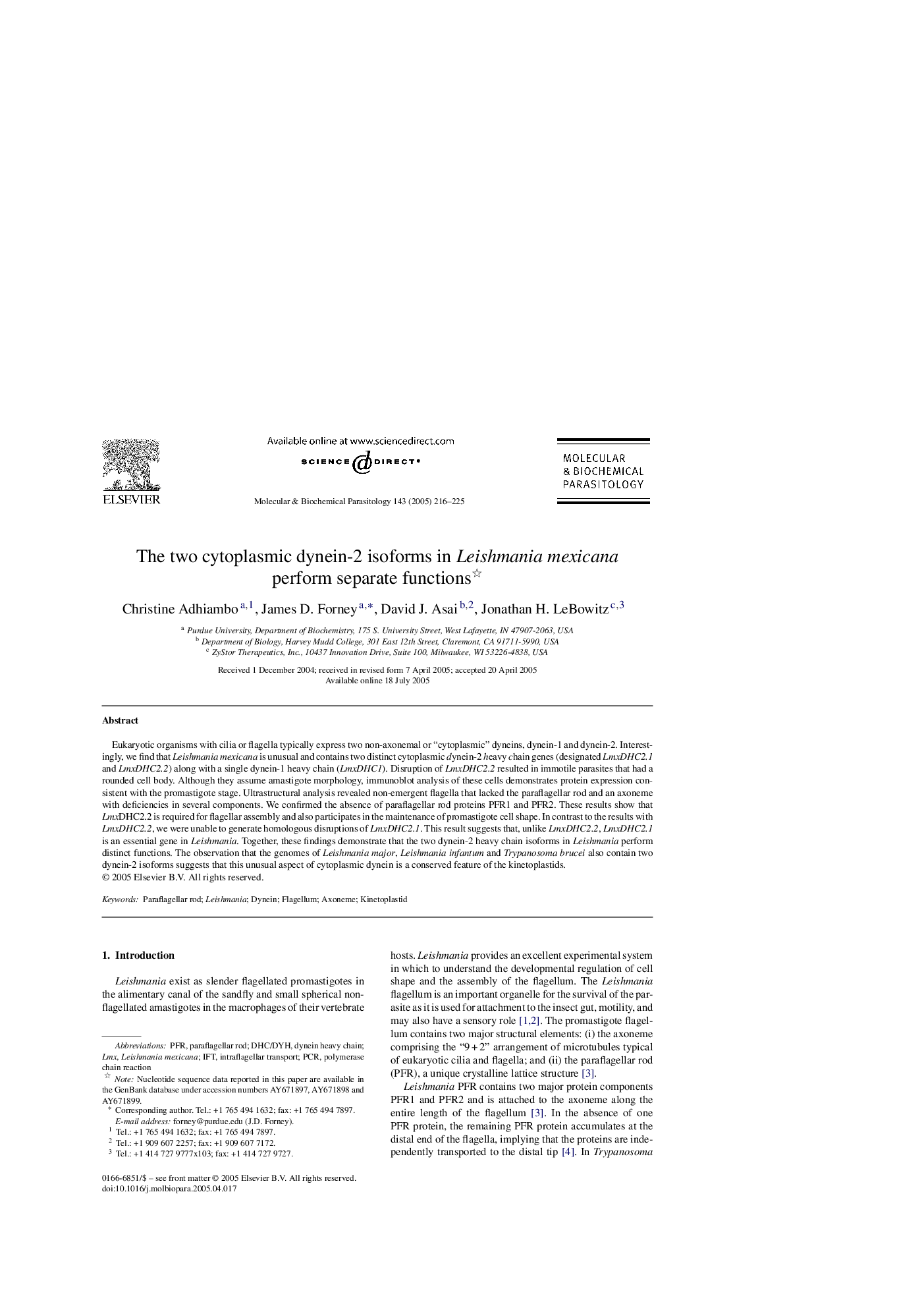| Article ID | Journal | Published Year | Pages | File Type |
|---|---|---|---|---|
| 9139959 | Molecular and Biochemical Parasitology | 2005 | 10 Pages |
Abstract
Eukaryotic organisms with cilia or flagella typically express two non-axonemal or “cytoplasmic” dyneins, dynein-1 and dynein-2. Interestingly, we find that Leishmania mexicana is unusual and contains two distinct cytoplasmic dynein-2 heavy chain genes (designated LmxDHC2.1 and LmxDHC2.2) along with a single dynein-1 heavy chain (LmxDHC1). Disruption of LmxDHC2.2 resulted in immotile parasites that had a rounded cell body. Although they assume amastigote morphology, immunoblot analysis of these cells demonstrates protein expression consistent with the promastigote stage. Ultrastructural analysis revealed non-emergent flagella that lacked the paraflagellar rod and an axoneme with deficiencies in several components. We confirmed the absence of paraflagellar rod proteins PFR1 and PFR2. These results show that LmxDHC2.2 is required for flagellar assembly and also participates in the maintenance of promastigote cell shape. In contrast to the results with LmxDHC2.2, we were unable to generate homologous disruptions of LmxDHC2.1. This result suggests that, unlike LmxDHC2.2, LmxDHC2.1 is an essential gene in Leishmania. Together, these findings demonstrate that the two dynein-2 heavy chain isoforms in Leishmania perform distinct functions. The observation that the genomes of Leishmania major, Leishmania infantum and Trypanosoma brucei also contain two dynein-2 isoforms suggests that this unusual aspect of cytoplasmic dynein is a conserved feature of the kinetoplastids.
Keywords
Related Topics
Life Sciences
Biochemistry, Genetics and Molecular Biology
Molecular Biology
Authors
Christine Adhiambo, James D. Forney, David J. Asai, Jonathan H. LeBowitz,
